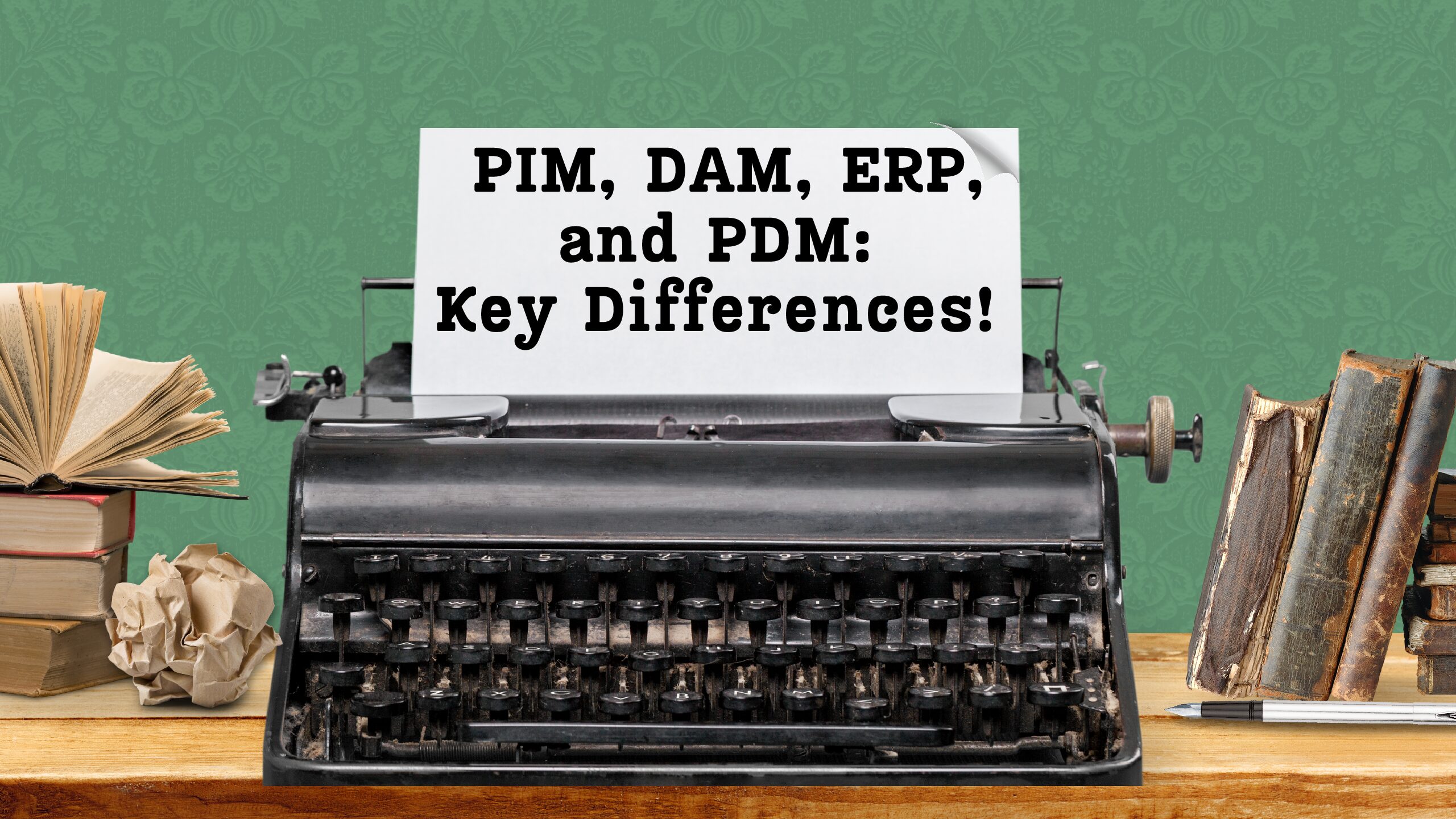Unlocking Digital Success: A Guide to Key Systems

PIM, DAM, ERP, and PDM help businesses grow with the huge range of features they offer. It is imperative to understand the difference. These tools are essential to satisfying e-commerce needs. Their integration offers e-commerce growth for SMBs. What these solutions offer to your businesses is more important than understanding the full form of acronyms. Let’s understand each other.
PDM
In this fast-paced, evolving digital age, businesses rely on PDM to manage the growing number of products on their sites and to handle product-related data. Engineers primarily use PDM to track technical specifications, manufacturing instructions, and CAD files.
In 2024, Siemens PLM Software, Upchain, Plytix, SolidWorks, Informatica, Delogue, TDSmaker, and INCONY will lead as the top manufacturers of PDM. Analysts estimate the global market size of PDM to reach USD 5,227.27 million by 2023.
PDM: Benefits

- Enhancement of efficiency related to product development.
- Reduces errors and cycle times.
- Improves collaboration among teams.
Who needs PDM?
Product development companies find PDM to be an imperative tool. It serves as a single source of truth and carries technical information and data about the product. We have already discussed the benefits of PDM for your business in 2024. To grow in this digital era, you need PDM.
ERP in detail
Enterprise Resource Planning (ERP) streamlines work processes, speeds up operations, and handles vast amounts of product-related information, benefiting departments like logistics, inventory, and management. Experts estimate that by 2024, 220,016 companies will use Enterprise Resource Planning (ERP) tools to grow and generate revenue.
The US and India lead in ERP usage, with Microsoft Dynamics and Workday as market leaders. Microsoft Dynamics holds a total market share of around 25.32%. ERP is essential for tracking resources and data. According to the latest statistics, the global market for ERP will reach $78.4 billion by 2026.
Benefits of ERP
- Assists in the flow of information.
- Enhances team collaboration and productivity.
- Reduces manual data entry errors.
Who needs ERP?

Ideal for organizations with supply chains and companies in various industries that need comprehensive business management.
DAM
Businesses can now manage their digital assets, such as videos, images, documents, and logos, using DAM, which makes these assets easily accessible and ensures the security of digital files stored carefully. As a result, 43% of organizations globally use DAM software.
Leading companies like Adobe, Canto Inc., Bynder, and Cognizant utilize DAM. Analysts projected the global market share of DAM to be USD 3.45 billion in 2022, and they calculate it will reach USD 12.29 billion by 2030.
Benefits of DAM
- Centralises and secures digital content.
- Ensures easy access and consistency of digital files.
- Streamlines collaboration and distribution.
Who needs DAM?
Marketing departments and businesses need consistent, up-to-date digital asset management. DAM helps organizations by offering several functionalities. DAM, along with storage solutions, enables businesses to achieve efficiency, consistency, and effectiveness in their marketing campaigns.
Unlocking the need for PIM

Product information plays a crucial role in today’s digital era, and businesses can easily manage it with Product Information Management (PIM) systems. Investing in PIM technology will help companies grow and boost their revenue by 2030. The global demand for PIM has surged, and experts estimate that the market will reach USD 12,621.65 million by 2027. However, businesses must conduct detailed research to make informed decisions about adopting these tools.
Benefits of PIM
- Centralises product information.
- Saves time and increases collaboration.
- Ensures consistent, accurate product information across all channels.
Who needs PIM?
B2B and B2C e-commerce companies with diverse sales channels and complex product data sets.
Comparing the systems

Differences between PIM and DAM:
PIM: Manages product data.
DAM: Manages digital assets (videos, images).
PIM vs. PDM:
PIM: Detailed information on the product is required for further sales and marketing.
PDM: Carries technical information and data.
PIM vs. ERP:
PIM: Enhances ERP data with rich product descriptions for consistent customer information.
ERP: Organises business functions but lacks detailed product information.
Conclusion
If you are unsure about these tools, then try to understand your business requirements first, because all of them function in different ways and are equally capable of supporting and managing your business in an efficient way. You can take advantage of our expert’s advice and call to get the complete information.
The team at Neranix has hands-on experience with WooCommerce, Magento, UI and UX, SEO, e-commerce, integration, WordPress, Google Ads, Google Analytics, and website development. To learn more in detail, you can reach out to our digital experts.

